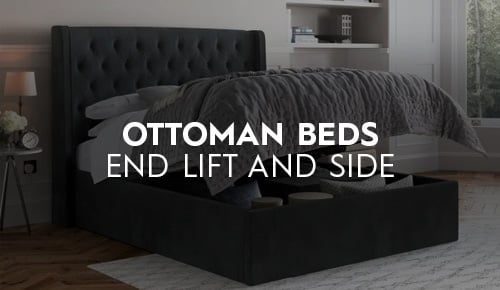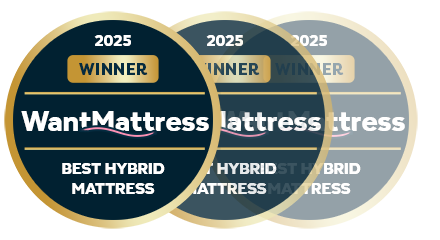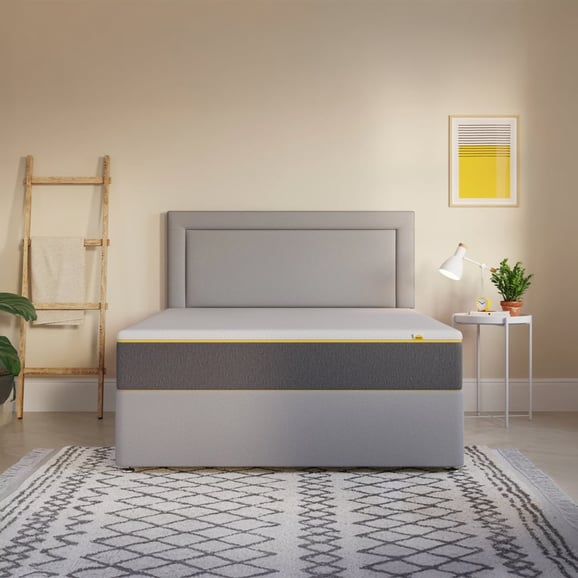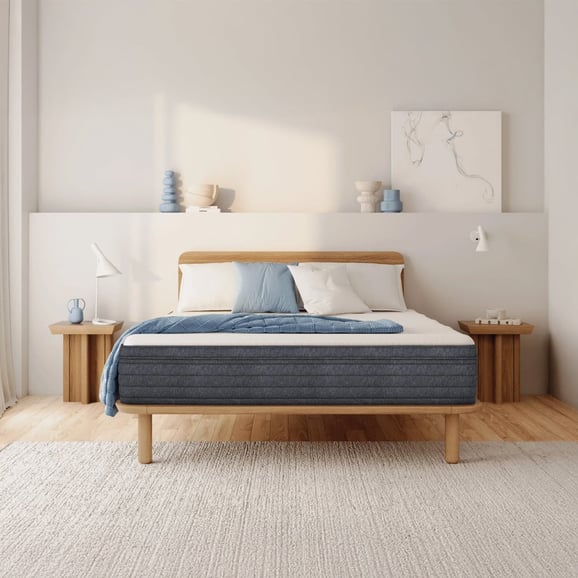For many looking for a new mattress, the first thing that comes to mind is ensuring that it is a memory foam mattress. Seen by many as the ultimate upper layer for supreme comfort, many do not realise that memory foam is not suitable for everyone, more than that, not all memory foam is created equal. Different mattresses have different feelings, firmness and supportive properties, so let's dive in.
Memory foam mattresses are often known simply as memory mattresses and are topped with NASA created viscoelastic materials. Depending on the depth of memory foam, it can work relatively well at relieving pressure on your joints, albeit they are usually pricier than other top layers.
So what are memory foam mattresses like to lie on? Well they feel very different to your traditional upper layers like natural fillings of cashmere, wool and similar. It is important to note that a memory mattress does not mean that it does not have springs, be it pocket spring or open coil, rather, that is a construction. Memory foam is not a construction (the middle bit of the mattress), it is a top layer. As such you can have a conventional pocket spring mattress with a foam top layer, giving you both the support of pocket springs and the comfort of a memory foam mattress.
Memory foam mattresses will mould to your body shape
Viscoelastic materials like memory foam can be affected by room temperature and so you may find that the firmness of your mattress can be determined by whether the room is hot and thereby soft, or cold and hard. However, your body emits massive amounts of heat when you sleep and as such it then moulds to your body shape. The caveat that always comes with viscoelastic foam is that it can be somewhat difficult to move around, so, if you are a restless sleeper that tosses and turns a lot, it may be that foam could be unsuitable.
Electric Blankets are typically a no-go when it comes to memory mattresses due to the potential fire hazard that may happen due to the materials used within memory foam. However, due to the way foam moulds to your body, it naturally feels quite warm anyway meaning that you can never feel too cold and thereby would rarely need an electric blanket.
When it comes to trying to get the most out of a mattress, best practise indicates you are meant to rotate a mattress but also, depending on the type of mattress, flip it. When it comes to foam mattresses, the foam layer is typically only on one side, meaning that most foam mattress products are not flippable.
If you are interested in buying the most popular type of filling on the market, memory foam is the one to go for. With the rise of mattress-in-a-box suppliers growing in popularity (Eve, Simba, Nectar), this type of mattress is proving more popular and more accessible than ever.
You can get these mattresses in a range of sizes from single up to super-king size at some great price points.
Memory foam-only mattresses vs Memory foam sprung mattresses
As mentioned previously, these mattresses are normally pocket spring or open coil mattresses with a layer of memory foam on top, often referred to as a mattress with memory foam. Some however, known as foam-only, have extra layers of foam, not memory, but reflex. These are known as foam only mattresses.
The difference between pure foam mattresses relative to a traditional mattress are that they can often be cheaper, due to how cheap reflex foam is compared to the costs involved in manufacturing and producing pocket springs and their corresponding cages.
Memory Foam Toppers
So let's say you've already committed to a new mattress that is proving unsuitable, or maybe you purchased online and found that it isn't ticking all the boxes in comfort, perhaps you find it too firm, requiring a medium firm rather than conventional firm and are just looking for a better nights sleep without the desire to buy an entirely new mattress all over again. If any of these reasons are resonating with you, hope is not lost, there is an alternative that can use your existing mattress and enhance it through the use of mattress toppers. These toppers are often cheap, far more so than having to pay the high price for a new mattress, while being cheap enough to justify taking a punt on getting a better sleep. While toppers cannot help with the support of a mattress, provided you are not having dipping issues or spring related problems, a mattress topper can prove to be the answer to your problems.
What is the cheapest memory foam mattress?
These mattresses cost anywhere from £200 - £3000, however, the more you pay does not always mean the more you get. With the rise of direct to consumer business models in the new and growing bed in a box industry, it's actually becoming increasingly easy to get a premium mattress that would have conventionally cost over £1000, for far cheaper due to the lack of retailer margin being put on top and lower delivery costs associated with the fact that foam mattresses with a reflex base can be delivered rolled, saving on warehouse space and delivery bulk that would otherwise add to costs.
Is memory foam a good mattress?
Memory foam mattresses represent great value for money with enhanced comfort properties. Provided you are a person that does not find themselves getting frequently too hot while sleeping, now do you find yourself being too restless in your sleep, there is no reason not to consider a memory foam mattress. Should you find you do get too hot but still want to experience the enhanced comfort of a memory foam product, then perhaps consider the new-to-market gel based mattresses.
How long do memory foam mattresses last?
So the good news here is that memory foam does not inherently perform worse over time relative to any other mattress materials. As such the quality of the mattress you purchase should not be impaired by the memory foam properties. Expectations for mattress length should be around 5-7 years, that is not a guarantee as there are always different types of quality in all materials, however, it should be used as a guide and expectation provided you are not "cheaping" out too much.














